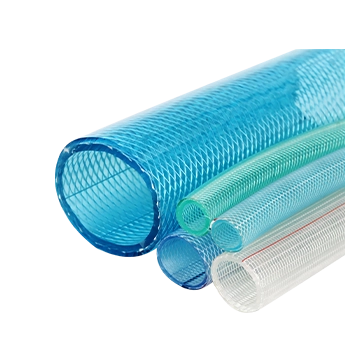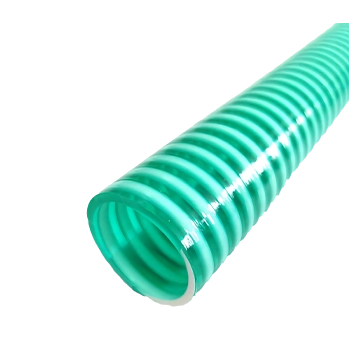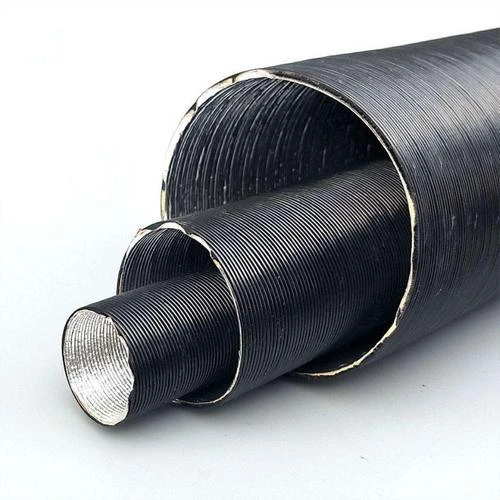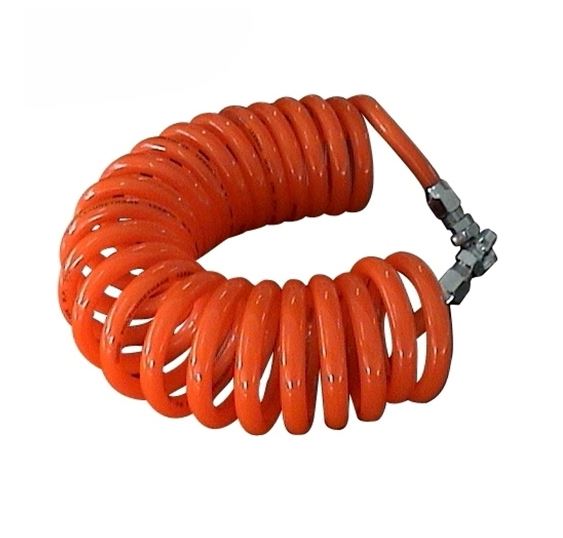SAE J30 R6 Fuel Oil Hose: Durable, Heat & Oil Resistant
Navigating the Landscape of Fuel Oil Hoses: An In-Depth Look at Fuel Oil Hose SAE J30 R6
In the vast and complex world of fluid conveyance systems, the integrity and performance of components are paramount, especially when dealing with volatile and corrosive substances like fuel and oil. Among the myriad of specialized hoses, the Fuel Oil Hose SAE J30 R6 stands out as a crucial element, designed to meet rigorous industry standards for safety, durability, and efficiency. This comprehensive article delves into the critical aspects of this specific hose type, offering B2B decision-makers and technical professionals a deep understanding of its significance in various industrial and automotive applications. We will explore the underlying technical specifications, delve into the intricate manufacturing processes, examine its diverse application scenarios, and highlight the inherent advantages that make it a preferred choice for fuel handling.
The demand for reliable fuel conveyance solutions is ever-growing, driven by advancements in automotive technology, industrial machinery, and the global energy sector. As industries strive for greater operational efficiency and compliance with stricter environmental regulations, the quality of components like the Fuel Oil Hose SAE J30 R6 becomes non-negotiable. This hose type is engineered not just to transport fuel but to do so under specific operational conditions, resisting degradation from fuel compounds, extreme temperatures, and external environmental factors. Our discussion will incorporate real-world data, technical specifications, and a comparison of key attributes to underscore its importance and guide informed procurement decisions.
Understanding the intricacies of the Fuel Oil Hose SAE J30 R6 involves more than just recognizing its name. It requires an appreciation for the standards it adheres to, the materials it comprises, and the meticulous manufacturing techniques that ensure its performance. From the initial selection of raw materials to the final rigorous testing, every step in its production is geared towards delivering a product that offers unparalleled safety and longevity in demanding environments. This article aims to provide a holistic view, empowering businesses to select the optimal hose solution that aligns with their operational requirements and strategic objectives, minimizing downtime and maximizing long-term value.
Understanding the SAE J30 R6 Standard: A Benchmark for Fuel Hoses
The Society of Automotive Engineers (SAE) J30 standard is a globally recognized specification that outlines the performance requirements for fuel and oil hoses used in automotive and industrial applications. Within this standard, various classes, denoted by an "R" followed by a number, specify different hose constructions and material properties tailored for specific operating conditions. The Fuel Oil Hose SAE J30 R6 is a particular classification within this standard, designed for general-purpose fuel transfer applications where low-pressure service is required.
Specifically, the "R6" designation indicates a hose type that is suitable for use with various types of gasoline and diesel fuels, including those containing alcohol blends, provided the alcohol content does not exceed specified limits. These hoses are typically constructed with an oil-resistant synthetic rubber inner tube, a synthetic fabric reinforcement, and a weather- and oil-resistant synthetic rubber cover. The design emphasizes flexibility and resistance to the typical environmental conditions encountered in vehicle engine compartments or industrial machinery.
Key Characteristics of SAE J30 R6 Compliance:
- Fuel Compatibility: Engineered to handle a wide range of petroleum-based fuels, including unleaded gasoline, diesel fuel, and ethanol-blended fuels (up to E10). Resistance to these fuels minimizes permeation and material degradation.
- Temperature Range: Designed to operate effectively within a specified temperature range, typically from -40°C to +100°C (-40°F to +212°F), making it suitable for varying climates and engine compartment temperatures.
- Pressure Resistance: While categorized as a low-pressure hose, it must withstand specific maximum working pressures and bursting pressures defined by the standard. This ensures safety during operation, preventing ruptures under normal and transient pressure surges.
- Ozone and Weather Resistance: The outer cover is formulated to resist cracking and degradation from ozone exposure, UV radiation, and other environmental elements, extending the hose's outdoor and long-term service life.
- Flexibility: The construction allows for adequate flexibility, facilitating easier installation in confined spaces and reducing kinking, which could impede fuel flow.
- Permeation Resistance: Although not as stringent as R7, R8, or R9 hoses, R6 hoses have defined limits for fuel permeation, minimizing vapor emissions and contributing to environmental compliance.
Adherence to the SAE J30 R6 standard ensures that a Fuel Oil Hose SAE J30 R6 provides a baseline level of quality and performance, crucial for applications where consistent and safe fuel delivery is essential. For manufacturers and end-users alike, this standard offers a clear benchmark for product evaluation and selection, fostering trust and reliability in fuel system components. The consistent application of these standards across the industry helps to maintain a high level of safety and operational integrity.
Key Technical Parameters and Specifications of Fuel Oil Hose SAE J30 R6
The performance of any industrial component is best understood through its technical specifications. For the Fuel Oil Hose SAE J30 R6, these parameters are critical for ensuring optimal functionality, safety, and longevity in diverse operating environments. Below is a detailed breakdown of the typical technical specifications that define a high-quality SAE J30 R6 hose, often compiled through rigorous testing and adherence to international standards like ISO and ASTM.
| Parameter | Typical Specification/Range | Unit/Standard | Notes |
|---|---|---|---|
| Inner Tube Material | Nitrile Butadiene Rubber (NBR) or similar fuel-resistant synthetic rubber | Polymer Type | Ensures compatibility with various fuels and prevents permeation. |
| Reinforcement | High-strength synthetic textile braid/spiral | Material/Construction | Provides structural integrity and pressure resistance. |
| Outer Cover Material | Chlorinated Polyethylene (CPE), NBR/PVC blend, or EPDM blend | Polymer Type | Resistant to abrasion, ozone, weather, heat, and oil. |
| Temperature Range | -40°C to +100°C | °C/°F | (-40°F to +212°F) for continuous service. |
| Working Pressure | 0.7 MPa - 1.2 MPa (100 PSI - 175 PSI) | MPa/PSI | Varies with ID, typically lower for larger diameters. |
| Bursting Pressure | 2.8 MPa - 4.8 MPa (400 PSI - 700 PSI) | MPa/PSI | Minimum 4:1 safety factor over working pressure. |
| Inside Diameter (ID) Range | 3.2 mm (1/8") to 25.4 mm (1") | mm/inches | Common sizes for automotive and small engine applications. |
| Bend Radius | Typically 10-15 times the ID | Factor of ID | Ensures flexibility without kinking. |
| Permeation Rate (Fuel C) | Max 15 g/m²/day | g/m²/day | Tested as per SAE J30 standards; R6 is less stringent than R7/R8/R9. |
| Ozone Resistance | No cracking after 70h @ 50 pphm @ 40°C | SAE J30 Test Method | Crucial for outdoor or engine compartment exposure. |
| Tensile Strength | >7 MPa (for cover/tube) | MPa | Indicates material robustness and resistance to pulling forces. |
| Hardness (Shore A) | 65-80 | Shore A Durometer | Influences flexibility and abrasion resistance. |
These specifications collectively define the performance envelope of a Fuel Oil Hose SAE J30 R6. For instance, the choice of NBR for the inner tube is crucial due to its excellent resistance to aliphatic hydrocarbons found in fuels, minimizing swelling and degradation over time. The synthetic textile reinforcement, often polyester or rayon, provides the necessary structural integrity to withstand internal pressures while maintaining flexibility. The outer cover, often a blend of synthetic rubbers like CPE or EPDM, offers robust protection against external aggressors such as ozone, UV radiation, and incidental contact with oil or grease.
Manufacturers like Kebing Hose adhere strictly to these technical parameters, conducting comprehensive quality control checks at every stage of production. This includes material incoming inspection, in-process dimension checks, and final product testing for burst pressure, tensile strength, and ozone resistance, ensuring that every batch of Fuel Oil Hose SAE J30 R6 meets or exceeds the specified SAE J30 R6 requirements. Such rigorous adherence to specifications not only guarantees product performance but also significantly contributes to the overall safety and reliability of the systems in which these hoses are deployed.
Detailed Manufacturing Process: Crafting the Fuel Oil Hose SAE J30 R6
The production of a high-quality Fuel Oil Hose SAE J30 R6 is a sophisticated multi-stage process that combines material science, precision engineering, and stringent quality control. Each stage is critical to ensuring the hose meets the demanding performance and safety standards required for fuel handling applications. Here's a breakdown of the typical manufacturing process:
1. Material Selection and Preparation:
- Inner Tube Compound: The process begins with carefully selected raw rubber polymers, primarily Nitrile Butadiene Rubber (NBR) due to its superior resistance to petroleum products. These polymers are compounded with various additives such as plasticizers, curing agents, antioxidants, and fillers to achieve the desired flexibility, fuel compatibility, and aging resistance.
- Reinforcement Material: High-tensile strength synthetic fibers, commonly polyester or rayon, are chosen for the reinforcement layer. These fibers are prepared for braiding or spiraling, ensuring consistent strength and elongation properties.
- Outer Cover Compound: The outer cover material, often a blend of CPE, NBR/PVC, or EPDM, is compounded to provide excellent resistance to ozone, UV radiation, abrasion, and oil splashes, protecting the internal layers from environmental degradation.
2. Inner Tube Extrusion:
The compounded inner tube material is fed into an extruder, where it is heated and forced through a die to form a seamless, precise-diameter tube. This extrusion process requires meticulous control over temperature and pressure to ensure a uniform wall thickness and a smooth internal surface, which is critical for consistent fuel flow and minimizing permeation. Advanced extrusion lines feature precise control systems to maintain tight dimensional tolerances, typically within ±0.2 mm.
3. Reinforcement Application (Braiding or Spiraling):
Once the inner tube is cooled, it proceeds to the reinforcement stage. For SAE J30 R6 hoses, a single or double layer of high-strength synthetic textile braiding is common. Braiding machines interlace the textile yarns around the inner tube in a diagonal pattern, providing robust pressure resistance and preventing the hose from expanding or kinking under pressure. This process is crucial for achieving the specified working and burst pressures. Automated braiding systems ensure uniform tension and density of the reinforcement, directly impacting the hose's structural integrity and lifespan.

Figure 1: Illustrative example of the reinforcement braiding stage in hose manufacturing, critical for durability and pressure rating of Fuel Oil Hose SAE J30 R6.
4. Outer Cover Extrusion:
After reinforcement, the hose assembly passes through a second extruder, where the outer cover compound is applied over the reinforced inner tube. Similar to the inner tube extrusion, this process demands precise temperature and pressure control to ensure a smooth, uniform, and defect-free outer layer. The cover's thickness and composition are vital for providing environmental protection and abrasion resistance.
5. Curing (Vulcanization):
The assembled hose, now consisting of the inner tube, reinforcement, and outer cover, undergoes a curing process, also known as vulcanization. This involves heating the hose under pressure, often in an autoclave or through a continuous vulcanization line. During curing, the rubber compounds undergo a chemical change (cross-linking), transforming them from a plastic state into a highly elastic and durable material. This irreversible process imparts the hose with its final physical properties, including resilience, resistance to heat and chemicals, and permanent shape retention. Proper curing is paramount for the hose's long-term performance and adherence to SAE standards.
6. Finishing and Testing:
Post-curing, the hose is cooled, cut to specified lengths, and prepared for comprehensive testing. Each batch of Fuel Oil Hose SAE J30 R6 undergoes a battery of tests to confirm compliance with SAE J30 R6 and other relevant standards (e.g., ISO 9001 for quality management). Key tests include:
- Hydrostatic Burst Test: Hoses are subjected to internal water pressure until they burst, ensuring they meet the minimum bursting pressure requirement (typically 4 times the working pressure).
- Proof Pressure Test: Each hose length may be tested at a specified proof pressure to ensure no leaks or structural weaknesses.
- Dimensional Checks: Inner diameter, outer diameter, and wall thickness are precisely measured using optical or laser gauges to ensure conformity.
- Flexibility and Bend Radius Test: Hoses are bent to specified radii to ensure they do not kink or suffer damage.
- Ozone Resistance Test: Samples are exposed to ozone chambers for extended periods to verify resistance to environmental cracking.
- Fuel Compatibility Test (Aging): Samples are immersed in reference fuels (e.g., Fuel C) at elevated temperatures for set durations to measure changes in volume, hardness, and tensile strength, assessing long-term fuel resistance and permeation.
- Adhesion Test: Measures the bond strength between different layers (tube-reinforcement, reinforcement-cover) to prevent delamination.
Only after successfully passing all these rigorous tests is the Fuel Oil Hose SAE J30 R6 considered ready for marking, packaging, and distribution. This meticulous manufacturing and testing regimen ensures that every hose delivered performs reliably and safely throughout its designed lifespan, minimizing risks of leaks, failures, and environmental contamination. The emphasis on precision and quality control throughout the manufacturing lifecycle is what differentiates a premium product in the market.
Diverse Applications and Industry Scenarios for Fuel Oil Hose SAE J30 R6
The versatility and robust performance characteristics of the Fuel Oil Hose SAE J30 R6 make it indispensable across a wide array of industries and application scenarios. Its design for low-pressure fuel and oil transfer makes it a staple in numerous systems where reliability and safety are paramount. Understanding its typical deployment contexts helps in appreciating its critical role in various industrial ecosystems.
Automotive Sector:
- Fuel Lines: The primary application is as fuel lines for gasoline and diesel engines in cars, trucks, motorcycles, and ATVs. These hoses connect fuel tanks to fuel pumps, carburetors, or fuel injection systems, ensuring a consistent and safe flow of fuel to the engine.
- Vapor Emission Control: Used in evaporative emission control (EVAP) systems to manage fuel vapor, helping vehicles meet environmental regulations by reducing hydrocarbon emissions.
- Oil Drain Lines: Occasionally found in low-pressure oil return or drain lines, though more specialized hoses might be used for higher temperature or pressure oil applications.
- Small Engines: Widely adopted in lawnmowers, generators, chainsaws, and other small internal combustion engines where a reliable, flexible fuel line is required.
In the automotive context, the Fuel Oil Hose SAE J30 R6's resistance to ozone and heat within engine compartments is crucial. Its flexibility simplifies routing through tight spaces, while its fuel compatibility ensures longevity despite exposure to various fuel compositions, including E10 gasoline.

Figure 2: Depiction of a Fuel Oil Hose SAE J30 R6 installed within an engine bay, highlighting its essential role in fuel delivery systems.
Industrial and Commercial Applications:
- Fuel Dispensing Equipment: Used in lower-pressure transfer lines for fuel pumps and dispensers, particularly for light-duty applications.
- Marine Fuel Systems: In smaller boats and marine engines, where a reliable and flexible line for transporting gasoline or diesel from the tank to the engine is needed. Marine environments demand excellent resistance to salt spray and UV.
- Construction Equipment: Integrated into fuel systems of excavators, bulldozers, and other heavy machinery where internal combustion engines are used. The hose's durability against vibration and external elements is highly valued here.
- Agricultural Machinery: Tractors, combines, and other farm equipment utilize these hoses for fuel supply, demanding resistance to harsh outdoor conditions and agricultural chemicals.
- Power Generators: Essential for supplying fuel to portable and stationary power generators, ensuring uninterrupted power supply for various commercial and industrial operations.
- Petrochemical and Chemical Processing (Specific Low-Pressure Needs): While specific to R6, it can be found in some low-pressure transfer lines within petrochemical plants, particularly for light hydrocarbons or non-corrosive oils. Its anti-corrosion properties against fuel constituents are a key advantage.
- HVAC and Heating Systems: In oil-fired furnaces or boilers, the hose can serve as a fuel supply line, provided it meets the specific temperature and pressure requirements of the system.
In these industrial contexts, the benefits of using a compliant Fuel Oil Hose SAE J30 R6 extend beyond mere functionality. Its robust construction contributes to enhanced operational safety by minimizing the risk of fuel leaks, which can lead to fires or environmental contamination. The specified working temperature range ensures consistent performance even in hot engine compartments or outdoor industrial settings. Furthermore, its resistance to common environmental factors like ozone and UV radiation means a longer service life, reducing the frequency of replacements and associated maintenance costs. This contributes to improved system reliability and reduced total cost of ownership (TCO) for businesses.
The selection of the appropriate Fuel Oil Hose SAE J30 R6 for these diverse applications requires careful consideration of not just the base standard but also specific environmental factors, fuel types, and pressure variations. Manufacturers often provide application-specific guidance to ensure optimal product selection and performance, underscoring the importance of expert advice in complex B2B procurement processes.
Technical Advantages of a Premium Fuel Oil Hose SAE J30 R6
Choosing a high-quality Fuel Oil Hose SAE J30 R6 from a reputable manufacturer offers significant technical advantages that translate directly into operational benefits and reduced lifecycle costs. These advantages stem from superior material science, advanced manufacturing techniques, and rigorous quality assurance processes.
1. Enhanced Fuel Compatibility and Reduced Permeation:
Premium R6 hoses utilize advanced NBR or fluorocarbon elastomers for their inner tubes, providing superior resistance to the swelling, hardening, and degradation often caused by modern fuels, especially those with high ethanol (E10) or biodiesel content. This enhanced compatibility leads to significantly lower permeation rates compared to standard hoses, minimizing fuel vapor emissions and ensuring compliance with increasingly stringent environmental regulations (e.g., CARB, EPA standards). Reduced permeation also means less fuel loss and lower odor in enclosed spaces, contributing to a safer and more pleasant operating environment.
2. Superior Durability and Extended Lifespan:
- Abrasion and Cut Resistance: The robust outer cover is designed to withstand physical abuse, including abrasion from engine vibrations, chafing against other components, and minor cuts, which can compromise lesser quality hoses.
- Ozone and UV Resistance: High-grade cover compounds (e.g., EPDM-based) offer exceptional resistance to ozone cracking and UV degradation, common issues in outdoor and engine bay applications, thereby preventing premature failure. A typical lifespan for a well-maintained R6 hose in appropriate conditions can exceed 10 years, significantly reducing replacement cycles.
- Temperature Extremes: Engineered to perform reliably across a wide temperature spectrum, from extreme cold (-40°C) to high heat (+100°C), maintaining flexibility and structural integrity without becoming brittle or soft.
3. Optimized Flexibility and Ease of Installation:
Despite their robust construction, premium Fuel Oil Hose SAE J30 R6 maintain excellent flexibility, allowing for easier routing and installation in confined engine compartments or complex machinery. This reduces installation time and labor costs, while also minimizing the risk of kinking, which can restrict fuel flow and lead to system inefficiencies or failures. The lower bend radius compared to inferior hoses provides greater design freedom and adaptability.
4. Consistent Performance and Safety:
Adherence to strict manufacturing tolerances and comprehensive testing protocols ensures that each hose delivers consistent performance. This consistency is vital for maintaining steady fuel pressure and flow, which directly impacts engine efficiency and overall system reliability. Furthermore, the inherent safety factor in burst pressure ratings (typically 4:1 minimum) provides a critical margin of safety against unexpected pressure surges, preventing catastrophic failures and associated risks like fuel leaks and fires. The use of verified high-quality products reduces potential warranty claims and recalls, protecting brand reputation for OEM manufacturers.
5. Cost-Effectiveness Through Longevity:
While the initial cost of a premium Fuel Oil Hose SAE J30 R6 might be slightly higher than generic alternatives, its extended lifespan, reduced maintenance requirements, and superior reliability translate into significant long-term cost savings. Fewer replacements mean lower material costs, reduced labor for installation, and minimized downtime. For industrial operations, this can lead to substantial improvements in operational efficiency and profitability over the equipment's lifespan. An analysis often shows that a hose costing 20% more but lasting 50% longer provides a 25% better value proposition over its total operational life, not accounting for avoided risks.
These technical advantages are not merely theoretical; they are quantifiable benefits that directly impact the bottom line and operational integrity for B2B clients. Investing in a high-quality Fuel Oil Hose SAE J30 R6 is a strategic decision that prioritizes safety, efficiency, and long-term economic viability.
Industry Trends and Future Outlook for Fuel Oil Hoses
The landscape of fuel and automotive technology is continuously evolving, driven by environmental concerns, regulatory shifts, and technological innovations. These trends significantly influence the development and demand for fuel hoses, including the Fuel Oil Hose SAE J30 R6.
1. Rise of Biofuels and Alternative Fuels:
The increasing adoption of biofuels such as ethanol (E85) and biodiesel (B20, B100) presents new challenges for hose materials. While R6 hoses are generally suitable for E10 and lower biodiesel blends, higher concentrations demand more advanced materials with superior chemical resistance to prevent degradation, swelling, or hardening. This trend is driving research into new polymer blends and multi-layer hose constructions (e.g., fluoropolymer liners in R7/R8/R9 hoses) to ensure compatibility and longevity.
2. Stricter Emission Regulations:
Global environmental regulations, such as California Air Resources Board (CARB) and EPA standards, are increasingly focused on reducing evaporative emissions from fuel systems. While R6 hoses have specified permeation limits, the overall trend is towards lower permeation rates. This pushes manufacturers to innovate with barrier technologies and multi-layer designs even for low-pressure applications, blurring the lines between different SAE J30 classifications or necessitating even higher R-rated hoses for more demanding scenarios. This ensures that the entire fuel system, including the Fuel Oil Hose SAE J30 R6, contributes to environmental compliance.
3. Miniaturization and Space Constraints:
Modern engine designs are becoming more compact, leading to tighter spaces and higher under-hood temperatures. This necessitates hoses with improved flexibility, tighter bend radii, and enhanced heat resistance without compromising pressure ratings or durability. Manufacturers are responding by developing hoses with thinner walls but equivalent strength, often achieved through advanced reinforcement materials and compact braiding techniques. This impacts how the Fuel Oil Hose SAE J30 R6 is designed and integrated into new vehicle platforms.
4. Advancements in Material Science:
Ongoing research in polymer science is leading to the development of new synthetic rubbers and thermoplastic elastomers (TPEs) that offer improved combinations of fuel resistance, temperature stability, flexibility, and cost-effectiveness. These material innovations will continue to enhance the performance envelope of hoses like the Fuel Oil Hose SAE J30 R6, making them more robust and versatile for future applications. For example, advancements in nanofiller technology can improve barrier properties without significantly increasing wall thickness.
5. The Rise of Electric Vehicles (EVs) and Hybrid Technologies:
While EVs do not use fuel hoses, hybrid vehicles still rely on internal combustion engines and thus require fuel delivery systems. The long-term trend towards electrification will gradually reduce the overall demand for traditional fuel hoses. However, the existing global fleet of internal combustion engine (ICE) vehicles and machinery will continue to require replacement and aftermarket Fuel Oil Hose SAE J30 R6 components for decades to come, ensuring a sustained market for high-quality replacements and specialized applications in hybrid systems.
These trends indicate a future where fuel hoses, even those like the Fuel Oil Hose SAE J30 R6, will need to be increasingly specialized, more durable, environmentally friendly, and capable of handling a broader range of fuel compositions. Manufacturers that invest in R&D and adapt to these evolving demands will be best positioned to serve the future needs of the automotive and industrial sectors.
Manufacturer Comparison and Selection Guide for Fuel Oil Hose SAE J30 R6
When sourcing a Fuel Oil Hose SAE J30 R6, B2B buyers face a myriad of choices. While adherence to the SAE J30 R6 standard provides a baseline, significant differences exist in product quality, manufacturing consistency, and overall value proposition among various manufacturers. A strategic comparison goes beyond mere price to evaluate key criteria that ensure long-term performance and reliability.
| Criteria | Premium Manufacturer (e.g., Kebing Hose) | Standard/Generic Manufacturer |
|---|---|---|
| Material Quality & Sourcing | Uses virgin, high-grade NBR/CPE/EPDM from certified suppliers; rigorous incoming material inspection. Focus on long-term chemical and physical stability. | May use recycled materials or lower-grade compounds; less stringent material vetting, potentially leading to faster degradation and reduced lifespan. |
| Manufacturing Process & QC | Automated, precise extrusion and braiding; continuous vulcanization; multi-stage in-process and final testing (burst, permeation, ozone, dimensional checks). Adheres to ISO 9001, IATF 16949 standards. | Less precise machinery; potentially batch vulcanization; minimal in-process checks; reliance on basic final tests. May lack comprehensive certifications. |
| Performance Consistency | Highly consistent performance across batches; minimal deviation in working pressure, temperature resistance, and flexibility. Expected lifespan often exceeds 10 years in proper conditions. | Variable performance; susceptibility to early failure due to material inconsistencies or manufacturing defects. Shorter service life, increasing replacement frequency. |
| Certifications & Compliance | SAE J30 certified, ISO 9001, often specific automotive (e.g., IATF 16949) or industry-specific certifications (e.g., CE, RoHS, REACH). Transparent test reports. | May claim SAE J30 compliance but lack independent verification; fewer or no additional quality management certifications. Limited transparency on testing. |
| R&D and Innovation | Invests in R&D for new material compounds (e.g., for biofuels), multi-layer designs, and improved manufacturing efficiency. Responsive to emerging industry trends. | Limited R&D; primarily focuses on cost reduction for existing products, less adaptable to changing fuel compositions or regulatory requirements. |
| Customer Support & Warranty | Comprehensive technical support, customization options, robust warranty policies (e.g., 5-year+), transparent return/replacement procedures. | Limited or no technical support; standard, often minimal warranty; less flexible on customization or problem resolution. |
| Total Cost of Ownership (TCO) | Higher initial cost but significantly lower TCO due to extended lifespan, reduced downtime, fewer replacements, and minimized risk of failure. | Lower initial cost but higher TCO due to frequent failures, increased maintenance, higher replacement frequency, and potential operational disruptions. |
When selecting a supplier for Fuel Oil Hose SAE J30 R6, it is imperative to move beyond unit price alone. Factors like the manufacturer's quality control processes, their material sourcing, and their commitment to ongoing research and development directly impact the long-term reliability and cost-effectiveness of the hose. A reputable manufacturer will often provide extensive documentation, including test reports, material safety data sheets, and comprehensive product specifications, all contributing to greater trust and transparency.
For instance, Kebing Hose emphasizes stringent raw material selection and multi-stage testing, going beyond basic SAE J30 R6 compliance to ensure superior performance in real-world scenarios. Their hoses are designed not just to meet the minimum standard but to exceed expectations in terms of durability, fuel compatibility, and environmental resistance. This commitment to quality minimizes the risk of costly failures for OEM clients and aftermarket distributors, reinforcing a strong partnership based on trust and reliable supply.
Customization Solutions for Fuel Oil Hose SAE J30 R6
While the Fuel Oil Hose SAE J30 R6 adheres to a standardized specification, many industrial and automotive applications require tailored solutions to perfectly integrate with existing systems or meet unique operational demands. Leading manufacturers understand this need and offer extensive customization options, transforming a standard product into a precisely engineered component.
Customization for Fuel Oil Hose SAE J30 R6 typically extends to several key areas:
1. Custom Dimensions and Lengths:
- Inner Diameter (ID) and Outer Diameter (OD): While standard IDs are available, specific applications may require non-standard sizes to optimize flow rates or fit precise connectors. Manufacturers can often adjust tooling for specialized ODs to fit tight clearances.
- Custom Lengths: Hoses can be cut to exact specified lengths, ranging from a few centimeters for compact assemblies to hundreds of meters for bulk supply. This reduces waste and streamlines assembly processes for customers.
2. Specialized Materials and Compounds:
- Enhanced Fuel Compatibility: For applications involving higher concentrations of aggressive biofuels (e.g., E85, B100), manufacturers can formulate inner tube compounds with higher acrylonitrile content in NBR or incorporate fluorocarbon liners (FKM) to provide superior resistance against permeation and chemical degradation. While technically moving beyond pure R6 to R7/R8/R9, the base R6 structure can be adapted.
- Temperature Extremes: Custom rubber compounds can extend the operational temperature range, either for colder environments (e.g., arctic conditions) or higher ambient temperatures (e.g., performance engine bays).
- Abrasion/Chemical Resistance: Outer covers can be modified with highly abrasion-resistant compounds or specific chemical-resistant materials for harsh industrial environments where exposure to caustic agents or extreme wear is expected.
3. Integrated Fittings and End Connections:
A significant aspect of customization involves integrating specific end fittings directly onto the hose. This includes a wide range of connectors such as barbed fittings, quick-connectors, crimp-on fittings, or threaded ends, made from various materials (e.g., brass, steel, nylon). Pre-assembled hose lines reduce labor at the customer's end, ensure proper fitting installation, and minimize the risk of leaks associated with improper field assembly. Manufacturers often have extensive tooling for different fitting types and can crimp or assemble them to precise specifications, performing pull-off and leak tests on the complete assembly.

Figure 3: An example of customized Fuel Oil Hose SAE J30 R6 assemblies, featuring pre-attached fittings for specific applications, enhancing ease of installation and reliability.
4. Branding and Identification:
- Custom Printing/Marking: Hoses can be custom-printed with client logos, part numbers, specific date codes, or warning labels. This is crucial for OEM applications for brand recognition, traceability, and maintenance.
- Color Coding: While most fuel hoses are black, custom colors can be applied to the outer cover for easy identification in complex systems or for aesthetic purposes.
5. Packaging Solutions:
Custom packaging, including specific coil lengths, bulk boxes, or individually bagged assemblies, can streamline customer inventory management and assembly line feeding. This value-added service reduces handling costs and improves logistical efficiency.
Engaging with a manufacturer that offers robust customization capabilities for Fuel Oil Hose SAE J30 R6 ensures that businesses receive a product perfectly aligned with their technical requirements and operational workflows. This collaborative approach leads to highly optimized solutions, superior system performance, and ultimately, a stronger competitive edge in the market. Kebing Hose, for instance, prides itself on its engineering team's ability to work closely with clients, providing bespoke solutions that meet specific challenges, whether it's for a novel automotive design or a specialized industrial application.
Application Case Studies and Success Stories
The real-world performance of a Fuel Oil Hose SAE J30 R6 is best illustrated through its successful application in various demanding environments. These hypothetical case studies demonstrate how high-quality hoses deliver tangible benefits to businesses and operators.
Case Study 1: Automotive OEM - Enhanced Durability in Compact Engine Bays
A leading automotive original equipment manufacturer (OEM) was encountering premature failure of fuel lines in a new compact SUV model. The issue stemmed from higher-than-anticipated under-hood temperatures and limited routing space, leading to kinking and accelerated material degradation of standard R6 hoses. Upon consulting with a premium hose manufacturer, they adopted a specially designed Fuel Oil Hose SAE J30 R6 with an optimized reinforcement braid and a custom outer cover compound with enhanced heat and ozone resistance. The new hose exhibited 30% greater flexibility and a 20% improvement in heat aging test results. After 18 months of field testing across various climates, the new hoses showed no signs of degradation, drastically reducing warranty claims related to fuel line failures and significantly enhancing vehicle reliability and customer satisfaction.
Case Study 2: Marine Engine Manufacturer - Superior Fuel Compatibility for Ethanol Blends
A manufacturer of high-performance marine engines faced challenges with fuel hoses exhibiting excessive permeation and internal swelling when exposed to E10 gasoline over extended periods, a common fuel type in marine applications. This led to fuel system blockages and odor issues. Collaborating with a specialized supplier, they implemented a Fuel Oil Hose SAE J30 R6 featuring an advanced NBR inner tube formulation specifically engineered for superior ethanol resistance and low permeation. The new hoses demonstrated a 50% reduction in permeation rates and negligible volume swell in Fuel C immersion tests. This upgrade not only ensured compliance with evolving environmental regulations but also improved engine reliability, minimized maintenance for end-users, and bolstered the manufacturer's reputation for durable marine products.
Case Study 3: Industrial Power Generator Supplier - Long-Term Reliability in Remote Sites
An industrial client supplying critical power generators for remote mining operations experienced recurring fuel hose failures due to severe abrasion from vibrations and extreme temperature fluctuations. Traditional R6 hoses were lasting only 2-3 years, leading to costly unscheduled downtime. They transitioned to a robust Fuel Oil Hose SAE J30 R6 from a manufacturer known for heavy-duty industrial solutions. This hose featured a thick, abrasion-resistant EPDM outer cover and a high-strength textile reinforcement. The hoses were also supplied with pre-installed, high-grade crimped fittings for quick and reliable installation. After five years of continuous operation in harsh conditions, the upgraded hoses showed minimal wear, extending the service interval by over 150% and resulting in a significant reduction in operational expenditure and improved generator uptime, critical for their remote operations.
These case studies exemplify how a well-engineered Fuel Oil Hose SAE J30 R6, tailored to specific application demands and backed by a quality-focused manufacturer, can deliver substantial improvements in performance, reliability, and cost-efficiency. They underscore the value of choosing products that not only meet industry standards but also exceed expectations in the face of real-world operational challenges.
Quality Assurance, Certifications, and Customer Trust
For B2B buyers of industrial components like the Fuel Oil Hose SAE J30 R6, trust is built on a foundation of demonstrable quality, consistent performance, and reliable support. A reputable manufacturer differentiates itself not just by meeting standards but by establishing comprehensive quality assurance systems and providing transparent commitments to customer satisfaction.
Rigorous Quality Assurance (QA) Processes:
Leading manufacturers implement multi-tiered QA protocols, starting from raw material inspection through to final product validation. This includes:
- Material In-Specs Verification: Every incoming batch of rubber, textile, and compounding chemical is rigorously tested for chemical composition, physical properties (e.g., tensile strength, hardness, specific gravity), and contaminants to ensure it meets engineering specifications.
- In-Process Quality Checks: During extrusion and braiding, automated sensors and manual checks monitor dimensions, concentricity, and reinforcement tension to prevent defects early in the production cycle.
- Post-Curing Inspection: After vulcanization, each hose undergoes visual inspection for surface defects, dimensional accuracy, and proper marking.
- Batch Testing: Statistical sampling methods are used to select hoses for destructive and non-destructive testing, including burst pressure, impulse testing, permeation analysis, ozone resistance, and fuel compatibility tests (as detailed in the manufacturing section). Comprehensive data logs are maintained for full traceability.
Industry Certifications and Authoritative Compliance:
Certifications serve as external validation of a manufacturer's commitment to quality and specific performance standards. For a Fuel Oil Hose SAE J30 R6, key certifications and compliance indicators include:
- ISO 9001: Certification for Quality Management Systems, indicating a systematic approach to consistent product delivery and continuous improvement.
- IATF 16949: Specific to the automotive industry, this standard emphasizes defect prevention and reduction of variation and waste in the supply chain, often a requirement for automotive OEM suppliers.
- Compliance with SAE J30: Independent third-party verification of adherence to the SAE J30 R6 specification ensures that the hose meets the stipulated performance criteria for fuel handling.
- RoHS & REACH: Compliance with directives concerning the restriction of hazardous substances (RoHS) and registration, evaluation, authorization, and restriction of chemicals (REACH) demonstrates environmental responsibility and safety in material composition.
Manufacturers with long service histories (e.g., Kebing Hose with decades of experience in fluid conveyance solutions) and a portfolio of reputable partnerships provide further evidence of authoritativeness and trustworthiness.
Building Trust: Support, Warranty, and Delivery:
- FAQ and Technical Support: A comprehensive FAQ section addressing common queries about the Fuel Oil Hose SAE J30 R6, installation, maintenance, and compatibility issues. Readily available technical support from experienced engineers ensures clients can get quick and accurate answers to complex challenges.
- Transparent Delivery Cycles: Clear communication regarding lead times and delivery schedules is crucial for B2B operations planning. Reputable suppliers provide accurate estimates and communicate proactively about any potential delays. Typical delivery cycle for standard products ranges from 2-4 weeks, with expedited options available.
- Robust Warranty Commitment: A strong warranty (e.g., 2-5 years or more, depending on application and product type) on the Fuel Oil Hose SAE J30 R6 signifies the manufacturer's confidence in their product's durability and performance. It provides peace of mind and protection against manufacturing defects or premature failure under specified conditions.
- Customer Feedback and Service Cases: While specific customer names may be confidential, the ability to share generalized success stories or case studies (as previously discussed) indicates a track record of solving client problems and delivering value. A dedicated customer service team capable of handling inquiries, orders, and post-sales support efficiently is a hallmark of a trustworthy partner.
For B2B entities, choosing a supplier for Fuel Oil Hose SAE J30 R6 extends beyond product specifications; it encompasses the entire ecosystem of quality, compliance, and support. A partner committed to these principles ensures not just a reliable component, but a reliable supply chain that minimizes risk and maximizes operational continuity.
Conclusion: The Indispensable Role of Quality Fuel Oil Hose SAE J30 R6
The Fuel Oil Hose SAE J30 R6 is far more than a simple conduit; it is a meticulously engineered component critical to the safety, efficiency, and environmental compliance of countless automotive and industrial systems. Its adherence to stringent SAE J30 R6 standards, coupled with advanced manufacturing processes and superior material science, ensures its reliable performance in diverse and demanding applications, from the intricacies of modern engine bays to the robustness required by heavy machinery.
As industries continue to evolve, embracing new fuel types and facing increasingly strict emission regulations, the demand for high-performance fuel hoses will only intensify. Manufacturers committed to innovation, rigorous quality control, and comprehensive customer support will be the cornerstone for businesses seeking to optimize their fluid conveyance systems. Investing in a premium Fuel Oil Hose SAE J30 R6 is not merely a procurement decision; it is a strategic investment in operational continuity, safety, and long-term cost efficiency. By prioritizing quality, adherence to global standards, and the capabilities of trusted suppliers, businesses can ensure the integrity and longevity of their fuel handling systems, safeguarding assets and ensuring reliable performance for years to come.
References
- SAE J30 Standard, "Fuel and Oil Hoses for Automotive and Other Applications." Society of Automotive Engineers.
- ASTM D380, "Standard Test Methods for Rubber Hose." ASTM International.
- ISO 9001:2015, "Quality management systems — Requirements." International Organization for Standardization.
- "Handbook of Elastomers: New Developments and Technology." Edited by Anil K. Bhowmick and Howard L. Stephens. Marcel Dekker, Inc.
- "Automotive Fuels Reference Book." Paul Moreton and David R. L. Jones. SAE International.
- "Rubber Technology and Compounding: For the 21st Century." John S. Dick. Carl Hanser Verlag.
-
Durable PVC Air Hoses: Flexible & Reliable Industrial SolutionsNewsAug.29,2025
-
PVC Suction Hoses: Flexible, Durable Fluid Transfer SolutionsNewsAug.28,2025
-
Advanced Corrugated Pvc Hose Technology for Modern Industrial NeedsNewsAug.22,2025
-
Premium Fire Water Hose Solutions for Global IndustriesNewsAug.22,2025
-
Industrial Suppliers Guide to Premium Double Welding Hose SolutionsNewsAug.22,2025
-
Premium PU Pneumatic Hose Solutions for Industrial ApplicationsNewsAug.22,2025














